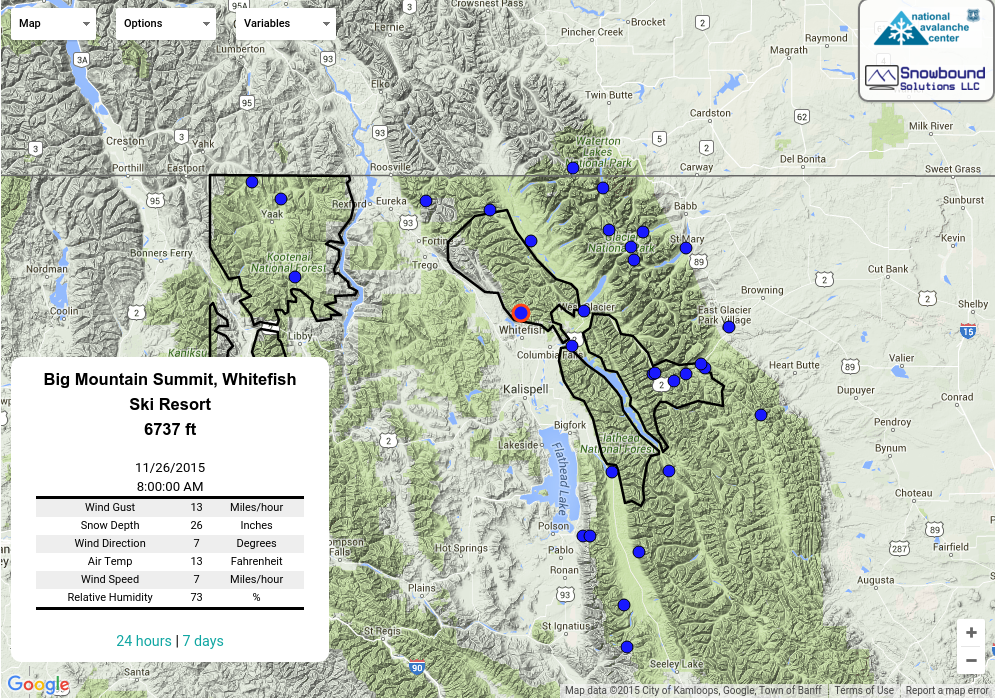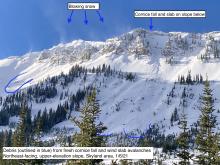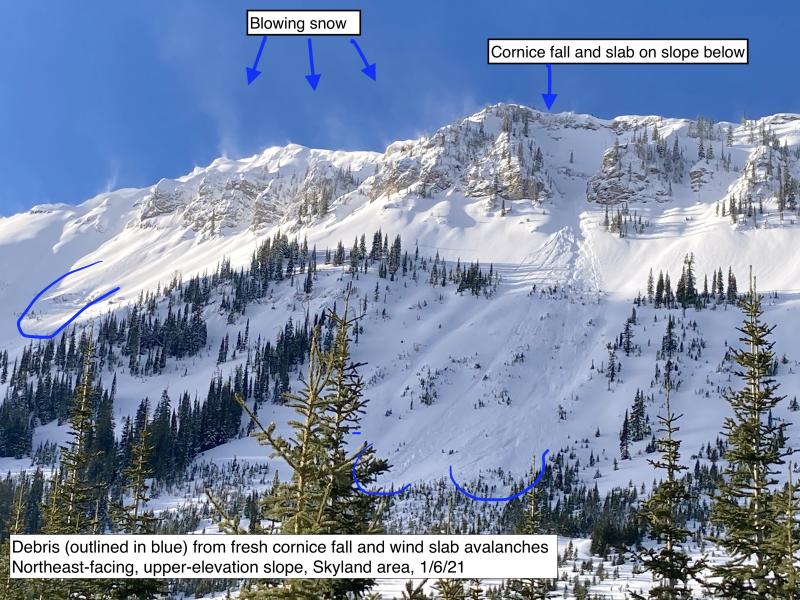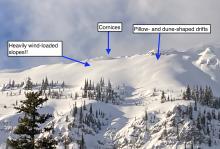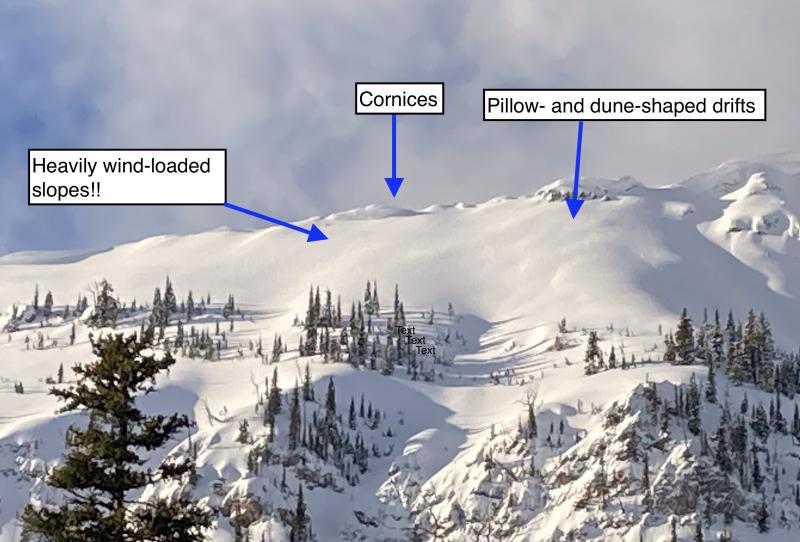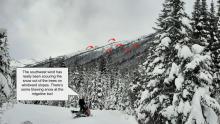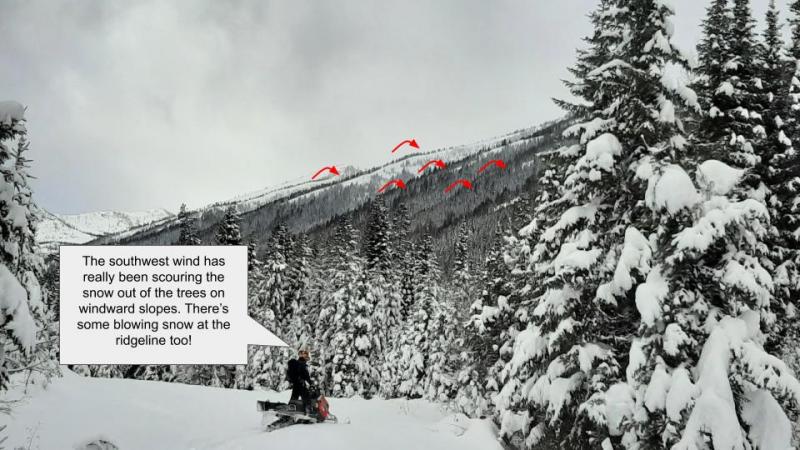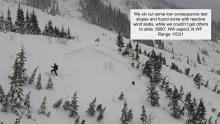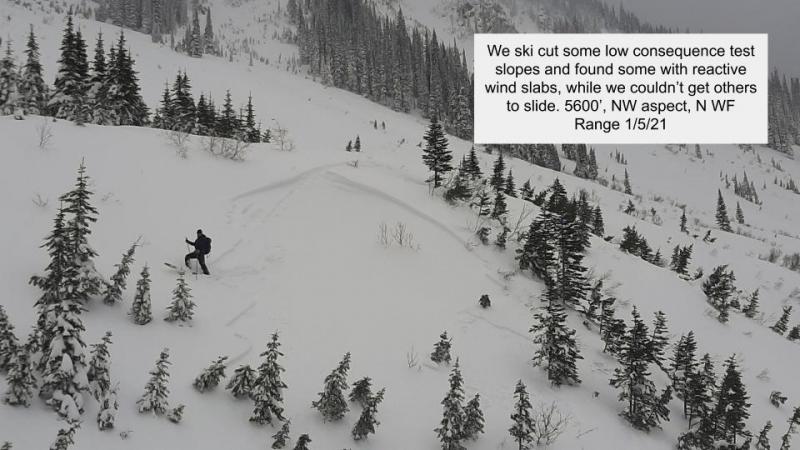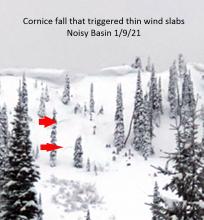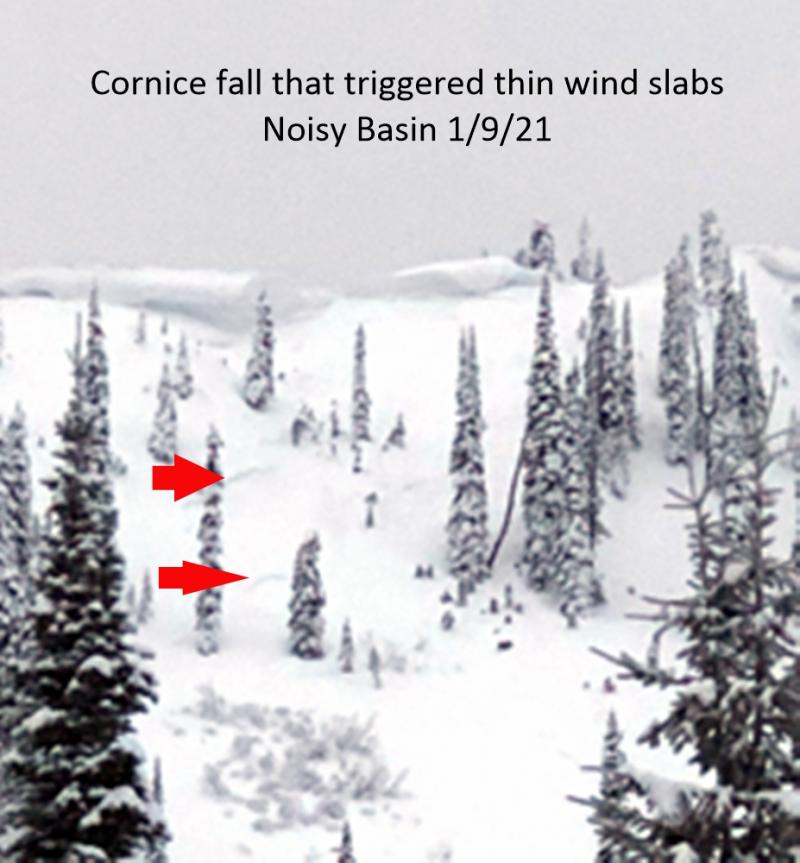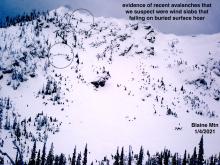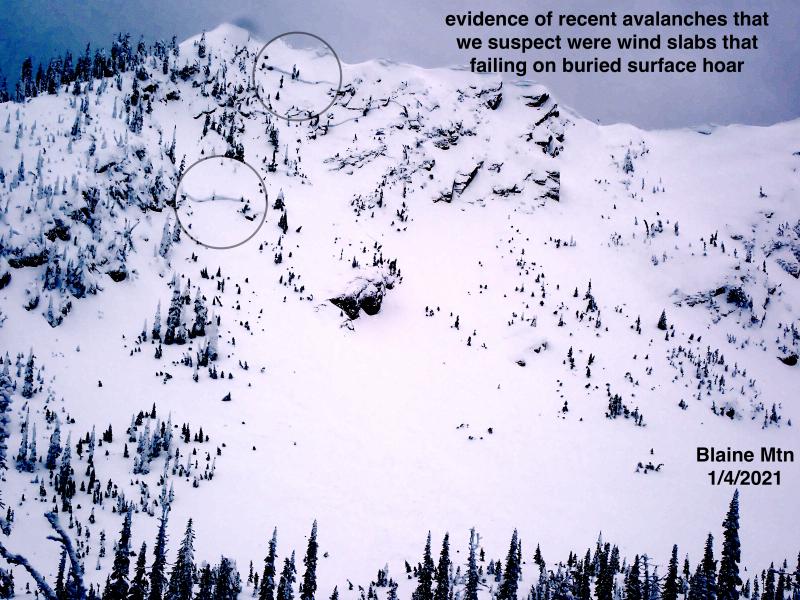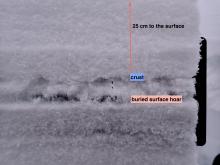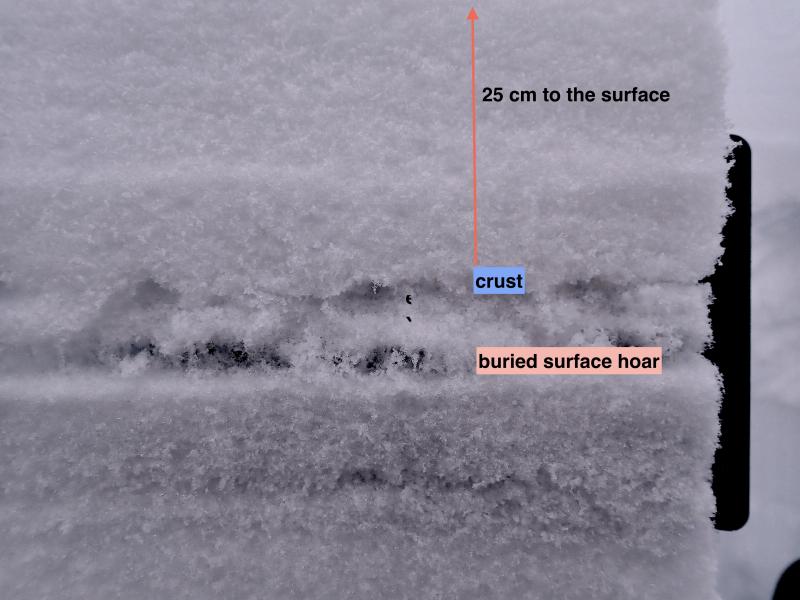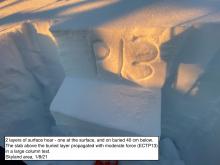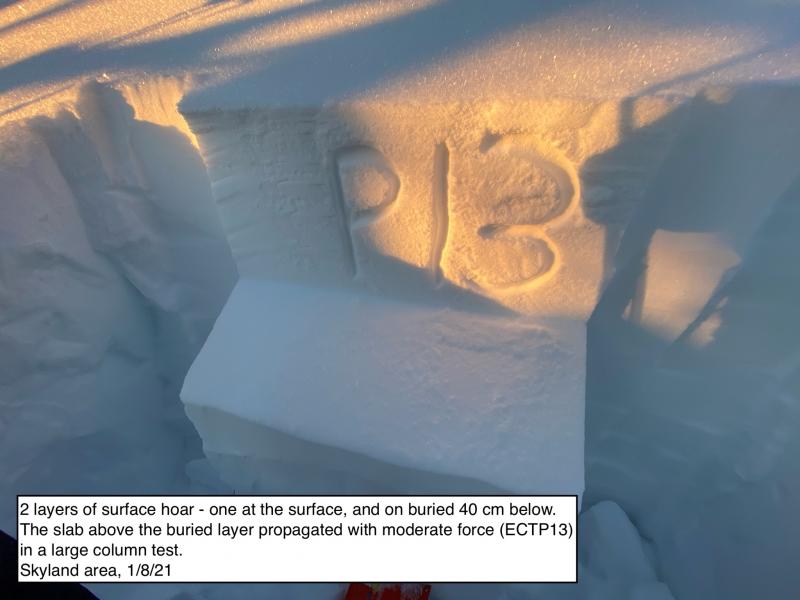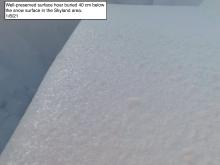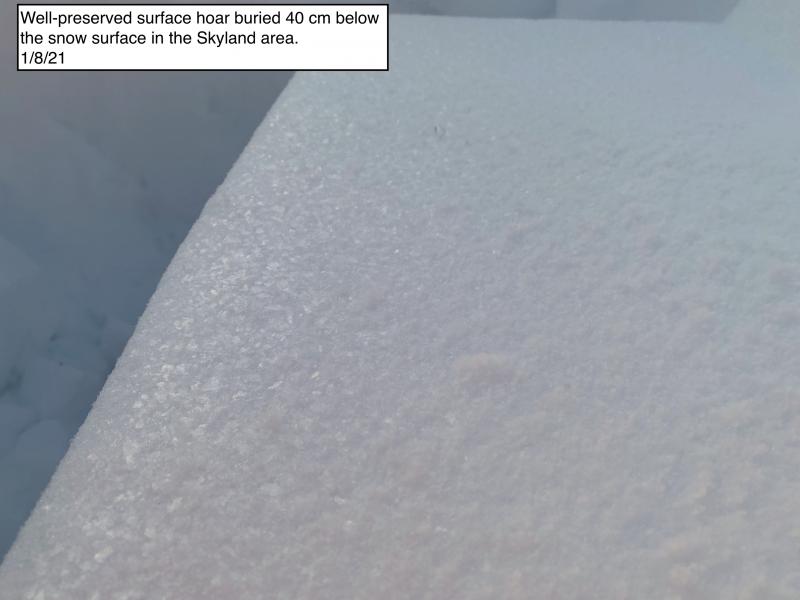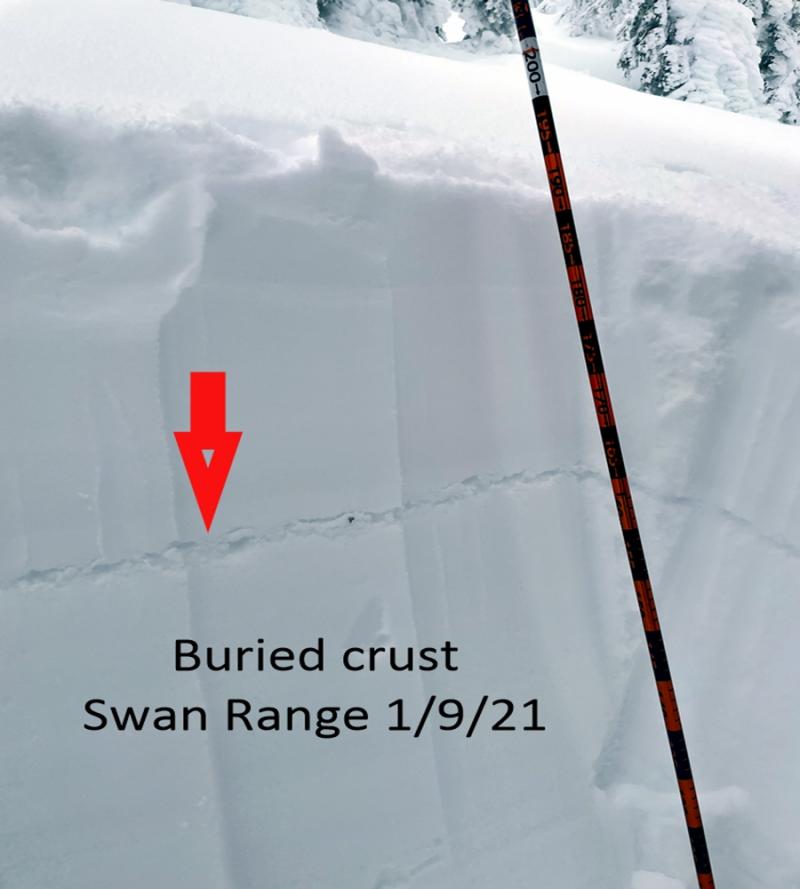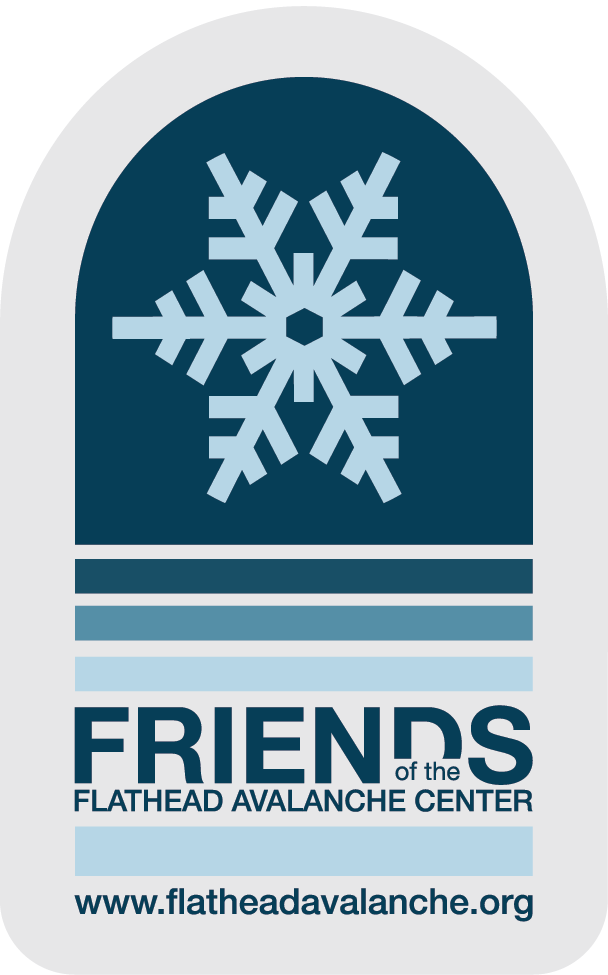| Monday | Monday Night | Tuesday | |
|---|---|---|---|
| Cloud Cover: | High pressure builds with light winds. | Clear and cool. | High pressure strengthens. |
| Temperatures: | 30-39 deg. F. | 6-20 deg. F. | 33-42 deg. F. |
| Wind Direction: | West | Southwest | South-southwest |
| Wind Speed: | 4-5 mph | 3-5 mph | 4-5 mph with gusts to 16 |
| Snowfall: | 0 in. | 0 in. | 0 in. |
| Snow Line: |
Whitefish Range
Swan Range
Flathead Range and Glacier National Park
How to read the forecast
Fresh wind slabs continue to form and thicken above Thursday's rain line. Our weak snowpack structure is now capped by a thick slab deposited during last weeks strong storms. The avalanche danger is CONSIDERABLE above 6000 feet and MODERATE below. Triggering a wind slab avalanche today is likely and it is possible to trigger an avalanche on a buried weak layer at all elevations. Conservative decision-making remains essential on all aspects.

3. Considerable
?
Above 6500 ft.
2. Moderate
?
5000-6500 ft.
2. Moderate
?
3500-5000 ft.
- 1. Low
- 2. Moderate
- 3. Considerable
- 4. High
- 5. Extreme
-
Type ?
-
Aspect/Elevation ?

-
Likelihood ?CertainVery LikelyLikelyPossible
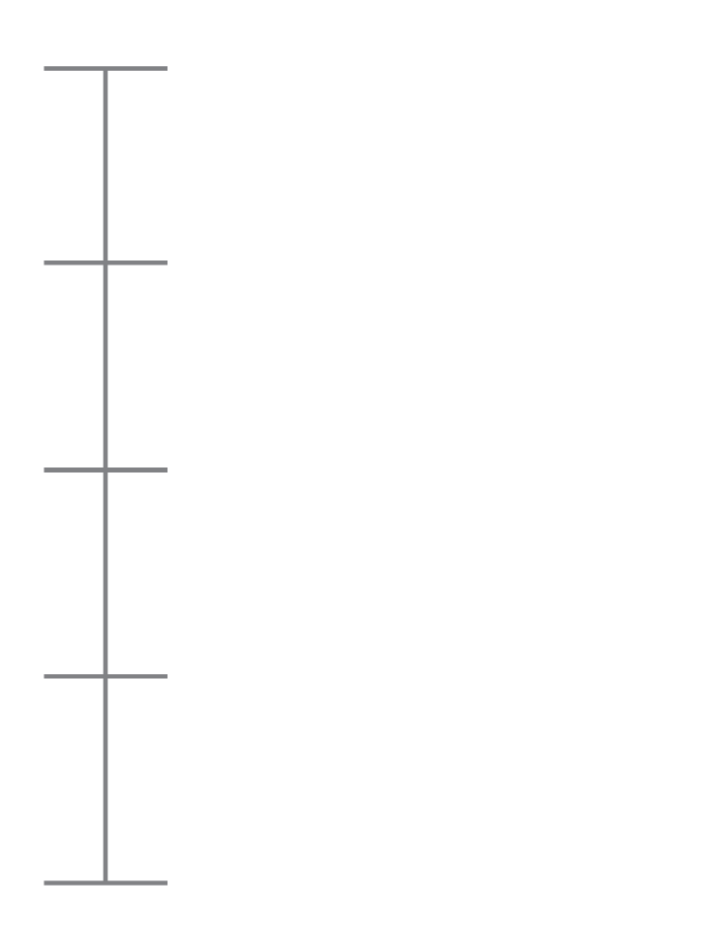 Unlikely
Unlikely -
Size ?HistoricVery LargeLargeSmall

Moderate to strong southwesterly winds have drifted snow onto typical leeward aspects in the alpine terrain for the past 3 days. Plumes of snow being blown off the higher peaks in Glacier Park was quite evident yesterday. Wind speeds are on the decrease but fresh wind slabs should be expected once you get above the rain line from Thursdays storm. Due to the amount of new snow that we recently received some of these slabs may be 3+ feet thick. It is likely that you could trigger a wind slab avalanche today, particularly in the alpine.
-
Type ?
-
Aspect/Elevation ?

-
Likelihood ?CertainVery LikelyLikelyPossible
 Unlikely
Unlikely -
Size ?HistoricVery LargeLargeSmall

This seasons unusual weather patterns have produced a snowpack that contains a variety of weak layers. Storms from last week have exacerbated this problem by capping these layers with a thick slab. These recent weather events have also preserved a near surface weak layer now buried between last weeks 2 storms. Stability tests are still showing reactive results around the January 19 crust and, in isolated locations, the depth hoar at the bottom of the pack. These weak layers do not always present obvious signs of instability and digging into the snowpack is the often the only way to determine their location and reactivity.
Conditions at low and mid-elevation terrain have recently become a concern. The snow structure is weak and was not a problem before the last series of storms due to the lack of a cohesive slab. Now that we have a thick slab above this weak snow structure, steep pitches well below tree-line need to be approached with caution.
Ladies, are you interested in refreshing your avalanche knowledge or looking for a great introduction to avalanche safety? If so, join us at The White Room Mountain Shop, in Whitefish, on Thursday, February 16th at 6:30 pm for a free, engaging, and entertaining 1 hour avalanche awareness presentation. The class includes general information about avalanche hazard, how to avoid it, and proper equipment for traveling in avalanche terrain.
Sunday: FAC staff were at WMR teaching an avalanche class for the Dream adaptive program. In our snowpits we observed easy failure associated with a weak layer preserved between last weeks 2 storms. We also noted propagtion with moderate force associated with weak snow surrounding the January 19 crust. Riders in the Stryker Ridge area of the Whitefish Range noted numerous signs of recent avalanche activity. Crowns were observed below tree line along with larger slides noted along the crest of the Whitefish Divide.
Saturday: FAC intern Zach was in the Ten Lakes region of the northern Whitefish Range where his group noted numerous avalanches from the recent storm cycle. They was also able to remotely trigger a hard slab avalanche from 100 yards on a layer of buried facets 2 feet below the snow surface and also experienced a large collapse during his tour. Skiers on Peak 6996, in southern Glacier Park, reported a supportable surface rain crust throughout their tour. This crust was 2-3" thick and pencil hard at upper elevations. Stability tests in their snowpit showed propagation at the January 19 crust. Active wind loading occurred during the day from the light snow that fell overnight.
Friday: Mark traveled in the backcountry east of the WMR ski area in the southern Whitefish Range. Numerous crowns from recent avalanche activity were noted on both north and south facing aspects. These avalanches occurred during both the February 4-6 storm and the February 8-9 storm. At upper elevations a dense 8 inches thick storm slab was resting on top of approximately 24 inches of recent low density snow.
See below for all observations this season.
In the past 24 hours temperatures ranged from the upper teens to upper 20s with winds out of the southwest that averaged 4-24 mph with maximum gusts of 18-39 mph. Currently, temperatures above 6000 feet range from 18-29ºF, and winds are southwest at 8-14 mph with gusts from 14-31 mph. Today high pressure will continue to strengthen over our area and we should see light winds with temperatures in the upper 20s to mid 30s.
| 0600 temperature: | 18-29 deg. F. |
| Max. temperature in the last 24 hours: | 26-31 deg. F. |
| Average wind direction during the last 24 hours: | South-Southwest |
| Average wind speed during the last 24 hours: | 4-24 mph |
| Maximum wind gust in the last 24 hours: | 18-39 mph |
| New snowfall in the last 24 hours: | 0 inches |
| Total snow depth: | 71-103 inches |
This advisory applies only to backcountry areas outside established ski area boundaries. This advisory describes general avalanche conditions and local variations always occur. This advisory expires at midnight on the posted day unless otherwise noted. The information in this advisory is provided by the USDA Forest Service who is solely responsible for its content.

